Prepping a Summer Emergency Kit
It’s time to gear up for road trip season! Whether you are headed to the coast, on a cross-country road trip, or you’re off to the grocery store to prepare for a “staycation” at home, it’s always a good idea to have your car prepped with an emergency kit. When it comes to your car, the unexpected is bound to happen. Good drivers know this, embrace it and are prepared for anything that’s thrown their way!
While you may not be able to prepare for all scenarios, there are a few good measures you can take to make sure if a break down occurs, you and your family are safe. A fully-stocked emergency kit is a simple way to prepare for the unexpected. While some articles recommend stocking your kit with every item under the sun, we are just going to cover a few key items which will help your situation be a bit more manageable.
 ...[more]
...[more]
Self-Inflating Tires…Soon To Be A Reality?
Driving around on underinflated tires is just a bad idea all the way around. Underinflated tires increase a car’s rolling resistance, meaning a drop in fuel efficiency since it takes more energy to move the vehicle down the road.
A single tire that’s down by ten pounds of air means a 3.3 percent drop in fuel economy…multiply that by all four tires, and you can figure on giving up ten percent of your gas mileage. The added friction and rolling resistance also means more heat is generated, and heat is the enemy of the internal structure of a tire. That heat will damage a tire to the point of failure. Studies show that underinflated tires are a full 25 percent more likely to fail, and at least half of one-car accidents involve a tire problem as a factor. And still, it’s estimated ...[more]
Mixing Tires – Bad Idea
In a perfect world, all four tires would wear out at the same time. In the same perfect world, everyone would be able to afford a whole set of tires all at once. Unfortunately, things often just do not work out that way.

Sometimes you may just have to replace tires as you can afford them, one or two at a time, but there are some important things to bear in mind if you have to do that.
If you can only afford to replace one or two tires, it’s essential that you go with tires that are identical (or at least as close as possible) to the car’s remaining tires. That means that internal construction, size, tread pattern and design should be close to the same. Don’t mix winter tires with all-season tires, don’t mix run-flat tires with ...[more]
Winter Safety Tips – Don’t End Up In the Ditch!

The Holidays Are Coming – Is Your Vehicle Ready?
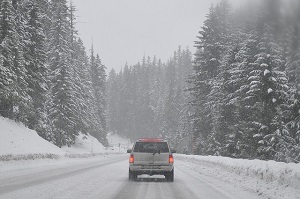
Do Your Homework on Tire Safety
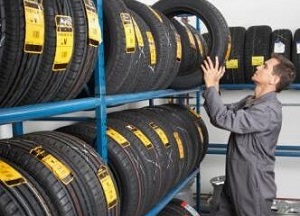
4 Budget Friendly Ways to Improve Mom’s Ride

9 Tips for your Spring Vehicle Checkup
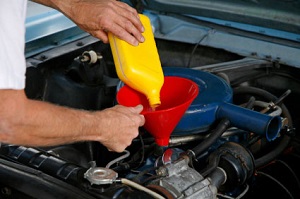 The temperatures are inching upward, the days are getting longer and the first buds are starting to appear on the trees. Spring is on its way, and soon it’s going to be time to do a little preventive maintenance on your ride. No need to dread it -- it’s all pretty routine stuff!
The temperatures are inching upward, the days are getting longer and the first buds are starting to appear on the trees. Spring is on its way, and soon it’s going to be time to do a little preventive maintenance on your ride. No need to dread it -- it’s all pretty routine stuff!
- Air filter - If you haven’t changed your air filter since last year (or can’t remember when you changed it at all), it might be time. It’s an easy and cheap fix, and it pays off in your vehicle’s performance and fuel economy.
- Cabin filter - Older vehicles often don’t have a cabin filter, but it can make a lot of difference in how pleasant your vehicle is to drive. Stale, smelly air? Change it!
- Wipers -- Get a good look at them. Are they showing signs ...[more]
Potholes...A Sign It’s Spring
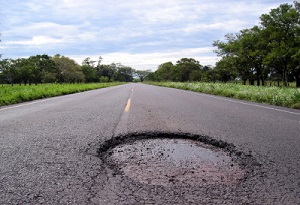 Nobody needs to remind you this has been an especially harsh winter.
Nobody needs to remind you this has been an especially harsh winter.
Winter is not just hard on vehicles and the people who drive them -- it’s hard on roads, too. With fluctuations in temperature and freeze/thaw cycles, pavement materials expand and contract, leaving streets with cracks and potholes. Add in the effect of washouts from heavy rain, caustic de-icing chemicals and damage from vehicles with studs or tire chains, and you can end up with springtime road surfaces which are a real mess.
Unfortunately, you can’t wait for the highway department to repair damaged pavement...you’ve got to get where you’re going, and your car’s tires, suspension and alignment are likely to pay the price. A hard impact on a pothole can be enough to tweak your front end ali ...[more]
Daylight Saving Ends - Check Your Vehicle Lights
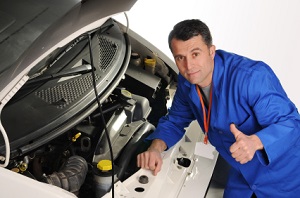 Prepare for the end of Daylight Saving Time with proper maintenance of vehicle lighting to ensure safety. After November 2nd, clocks “fall back” which causes most drivers’ commutes to be in darker lighting, being that dusk will occur during peak hours of evening traffic hours. As winter quickly approaches, vehicle lighting should be inspected to ensure optimum visibility for drivers in dim or inclement conditions that command top quality operations of both lighting and windshield wipers.
Prepare for the end of Daylight Saving Time with proper maintenance of vehicle lighting to ensure safety. After November 2nd, clocks “fall back” which causes most drivers’ commutes to be in darker lighting, being that dusk will occur during peak hours of evening traffic hours. As winter quickly approaches, vehicle lighting should be inspected to ensure optimum visibility for drivers in dim or inclement conditions that command top quality operations of both lighting and windshield wipers.| 12 | Next >> |



